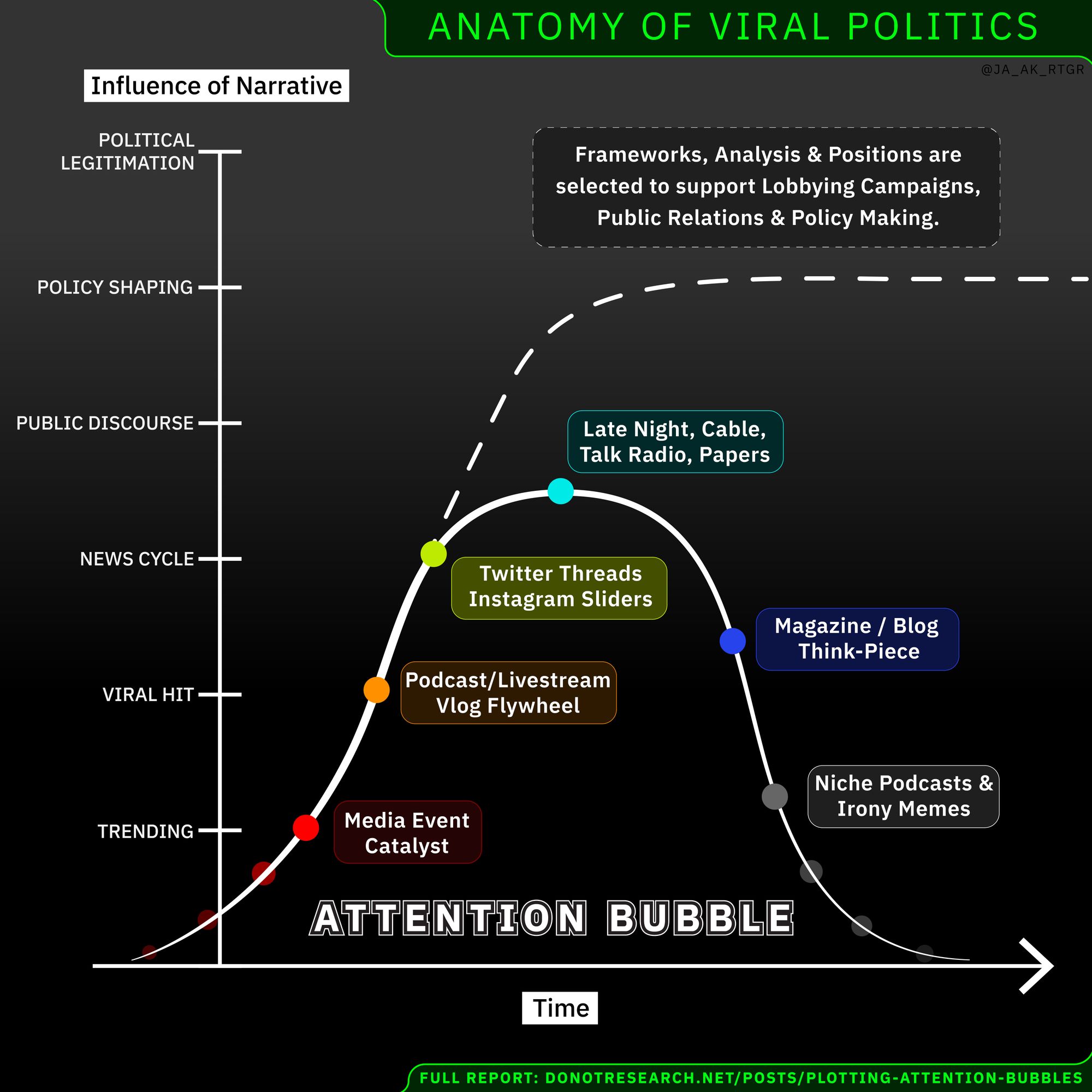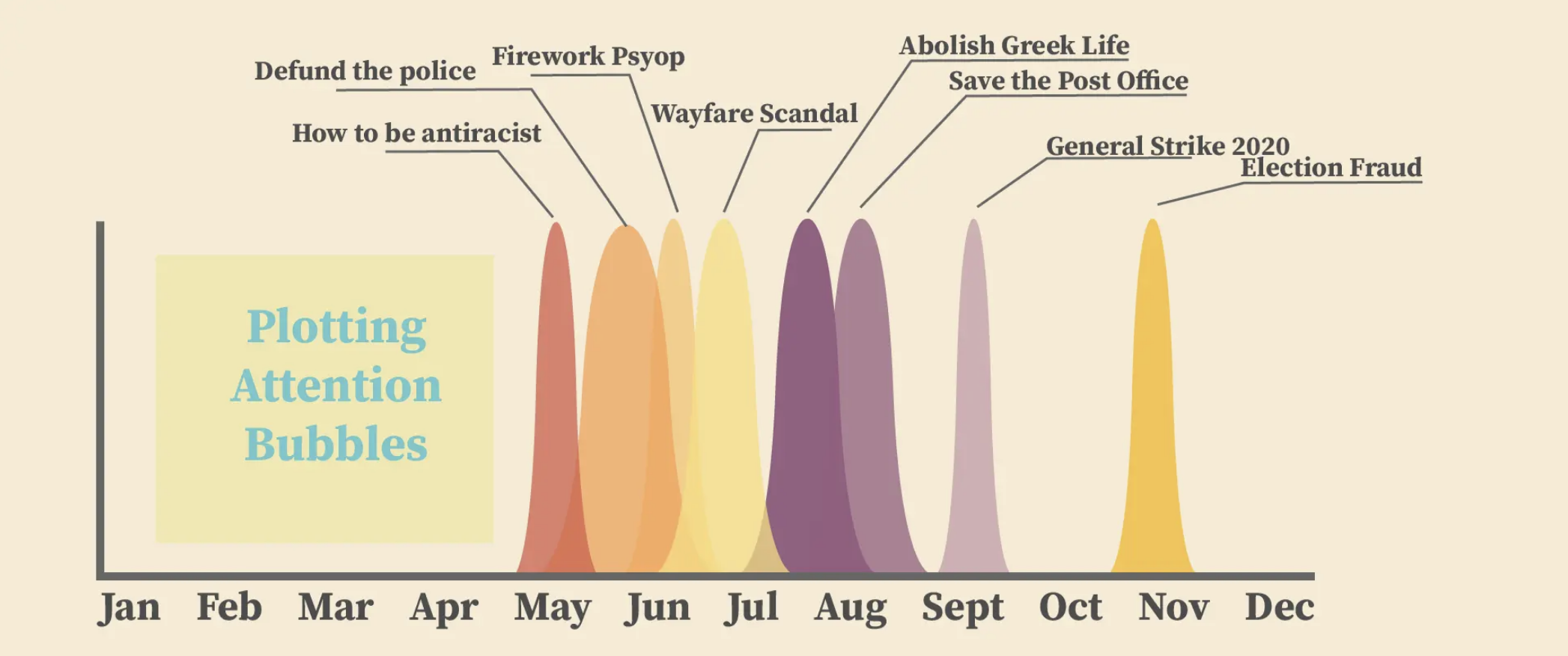Modeling Viral Politics with "Attention Bubbles"

We face a very difficult time. As media fatigue and agency panic grip doomscrollers and cable news viewers, a strange and now familiar feeling sets in: 'Oh Dearism' - the sense that terrible things are happening and that there is nothing we can do but watch. Social media has hyper-accelerating this process. What was once a months long rise and fall ( from astonishment and outrage to disinterestedness and normalization ) now takes place in a matter of days or weeks.
In the coming news cycle, an attempt at normalcy will be made, the ongoing crisis will be made programatic and next steps will be realized. It is in this moment that it is paramount to inject new paradigms, formerly overlooked narratives and complexifying dynamics into the media mix. By doing so, the hope is to influence and steer policy making and political legitimation narratives in the future. This is the work of Think Tanks, but as the political system is captured by private interests of capital, it is on us, the public, to open source this process and detour it towards egalitarian, long-term, counter-authoritarian ends.

The dynamic of "Attention Bubbles" is scoped out in a piece by Anthony Simons on Do Not Research to which I contributed a paragraph about one of the first viral attention bubbles: #Kony2012:
In 2012 a non-profit charity organization called Invisible Children launched a campaign called #KONY2012. The group had been building steam for a couple years in the missionary trip sector by creating activism events and fundraising drives around the issue of child soldiers in Africa. The mission reached it’s apex when a short-form Vimeo documentary went viral on Facebook. The film followed the personal journey of Invisible Children’s founder as he discovered the plight of child soldiers and resolved to do something about it. The video was followed by a clear call to action: share on social media, inform your network and donate. As the viral hit snowballed into a full fledged media moment, the donations flooded in. But, so did the reporters. Journalists uncovered lavish expenses on the Invisible Children tax disclosures (ostensibly to woo donors) as well as analysis of how the organization was effecting change on the ground in the Democratic Republic of Congo. They revealed that the aid money was not going to those in need, or worse, was creating more instability among warring guerrilla factions. It became even more complicated when the target of #KONY2012, Warlord Joseph Kony, was revealed to have been supported in the past by foreign political interests. After one week of incredible media attention, Invisible Children’s founder suffered a mental breakdown and was caught running through Beverly Hills naked by paparazzi. At the end of the saga we are left with an intractable weariness that Adam Curtis described in a film of the same name as “Oh Dearism.”
Follow commentary on this topic and evolving media models on Instagram or in DNR Discord.
March 9, 2022
